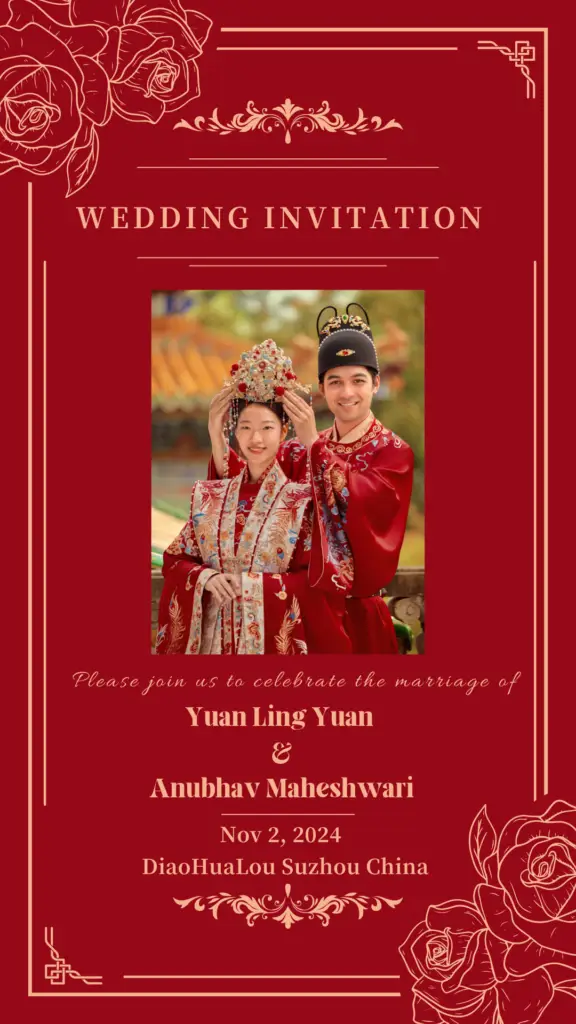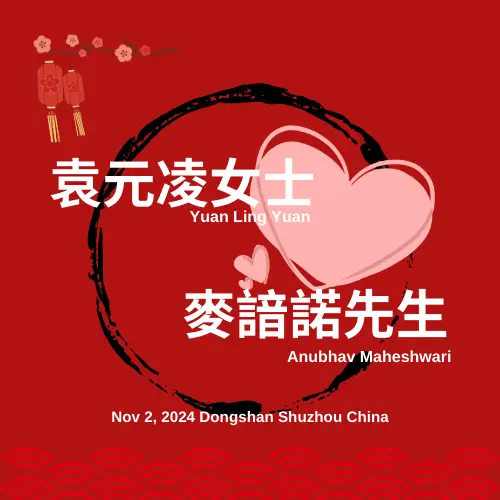Wedding Venue
Diaohualou, Donshan, Shuzhou, China
The Carved Building, known as “Diaohualou” in Chinese, is a grand mansion built during the Republic of China period in Dongshan, Suzhou, near Shanghai. Hosting a Tang-style Chinese wedding here symbolizes the parents’ wish to pass on the values of filial piety and family ethics from Chinese culture to the newlyweds. This traditional wedding not only pays homage to the culture but also embodies the hopes for the couple’s future family life, helping them establish a healthier and more stable marriage.
The King of Cotton Yarn: Jin Xizhi
During the Republican era in Shanghai, there was a “Cotton Yarn King” named Jin Xizhi, who built a house in his hometown, Dongshan Town, Suzhou, to express his filial piety towards his mother. Named “Spring Is Always Here,” the residence is renowned for its exquisite carved artistry. The dramatic rises and falls in the life of its owner also make it an inevitable topic of discussion when talking about “Spring Is Always Here.”
In Songyuan Lane, Dongshan Town, Suzhou, Jiangsu Province, there stands an old house from the Republican period. This house, adorned with numerous and exceptionally fine carvings that astonish all who visit, reflects the extraordinary wealth of its owner. Known as Dongshan “Carved Building” and also as “Spring Is Always Here,” it bears the title of “the premier carved building in Southern Jiangsu.”
The owner of this house was Jin Xizhi from Dongshan, Suzhou, famously known as the “Cotton Yarn King.”

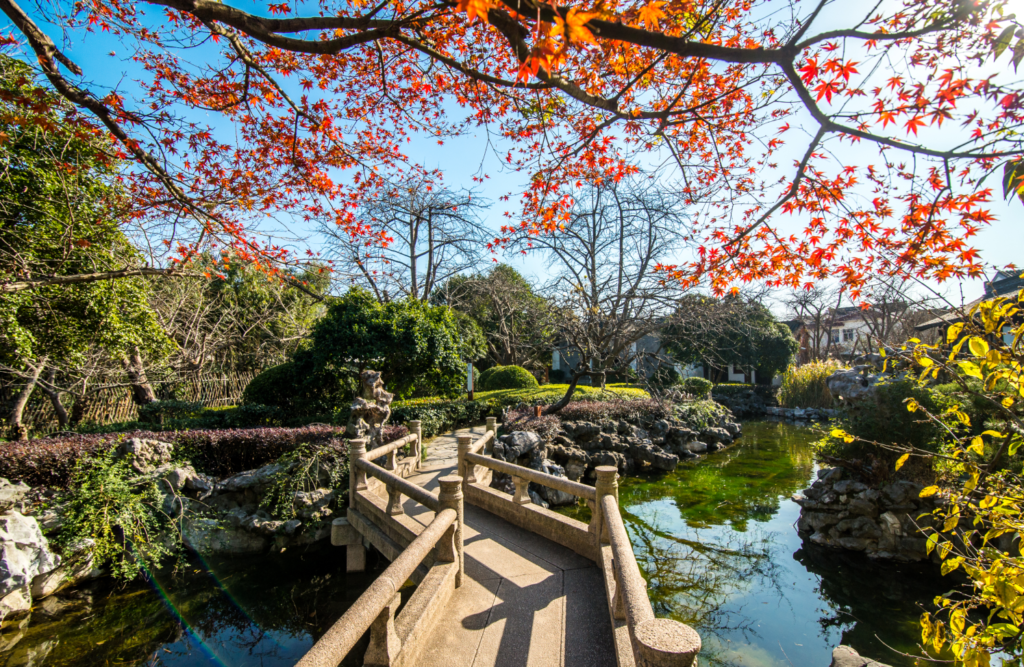
The Background of the Project of “Spring Is Always Here.”
Jin Xizhi first purchased a row of bungalows east of his ancestral home in his hometown and negotiated with the northern neighbors to buy some of their houses and orchards to expand the foundation of the new mansion, then had the blueprints drawn up. According to Mr. Jin Zhenlin, a descendant of Jin Xizhi, the original design included a large garden, which was reduced when the northern neighbors raised the land price beyond what the Jin family could afford. After finalizing the design, Jin Xizhi, busy with business and unable to stay long in his hometown, entrusted the entire project to his brother Jin Zhizhi. In 1922, during the post-World War I economic depression, craftsmen, in collusion with Jin Zhizhi and without Jin Xizhi’s knowledge, greatly enhanced the construction standards, leading to a building that was elaborately carved everywhere. Jin Xizhi was furious when he learned that the brick carvings on the main door alone cost 3,500 silver dollars. Despite his frustration at being tricked into paying more, the entire budget of 170,000 silver dollars was spent, and the project of mansion, “Spring Is Always Here” was completed after three years. Although he felt cheated, Jin Xizhi fulfilled his mother’s long-held wish, embodying the ancient virtue of filial piety.
“Spring Is Always Here” is the name of Dongshan Carved Building. The origin of the name has two theories: one suggests that the “Spring Is Always Here” inspiration came from a famous scholar from Suzhou, Yu Yue, who had a famous line, “Flowers fall but spring remains,” and had a lecture hall named “Spring Is Here Hall.” Another theory states that the building’s entrance faces east, aligning with the saying, “Towards the sun, spring always remains,” hence the name. Regardless of the origin, “Spring Is Here” symbolizes “eternal spring” or “everlasting youth.”
From afar, the black firewall of “Spring Is Always Here” is strikingly visible
The perimeter of “Spring Is Always Here” features a black firewall over 20 meters tall, flanked by Hui-style horse-head walls, making the residence resemble a mysterious castle from a distance. The house faces east, comprises a hundred rooms, and showcases a typical two-entry, five-bay courtyard layout of the Republican era. A clear central axis runs through the building, organizing spaces from the outer reflection wall and gatehouse to the front and rear buildings, with a garden to the north and the old house, “Qin De Tang,” to the south, and miscellaneous rooms on the west. Between the front and rear buildings lies a courtyard.
The most fascinating aspect of “Spring Is Always Here” lies in its intricate decorations, employing techniques like brick carvings, wood carvings, sculpture, colorful paintings, and murals, all rich in a blend of Chinese and Western styles.
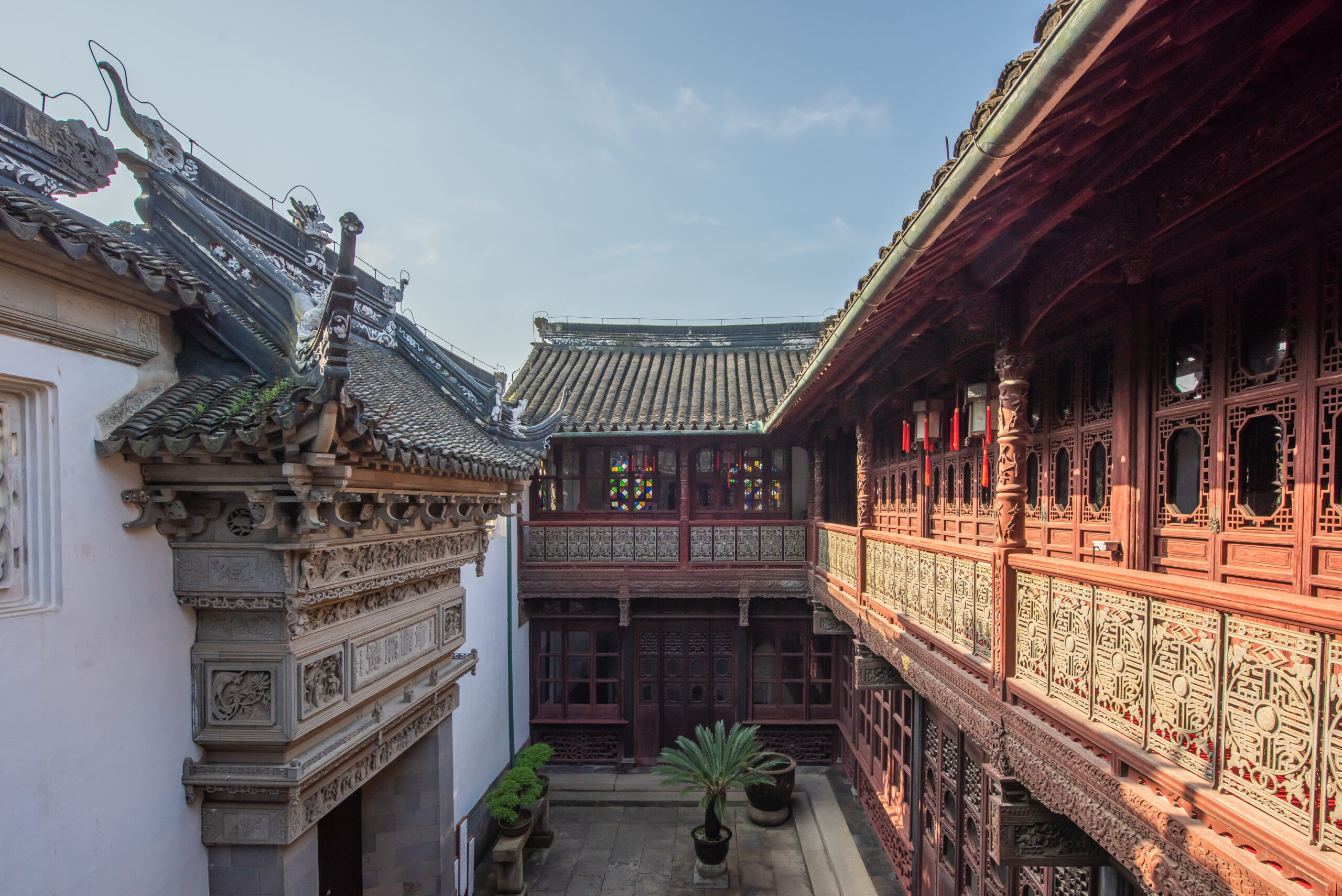
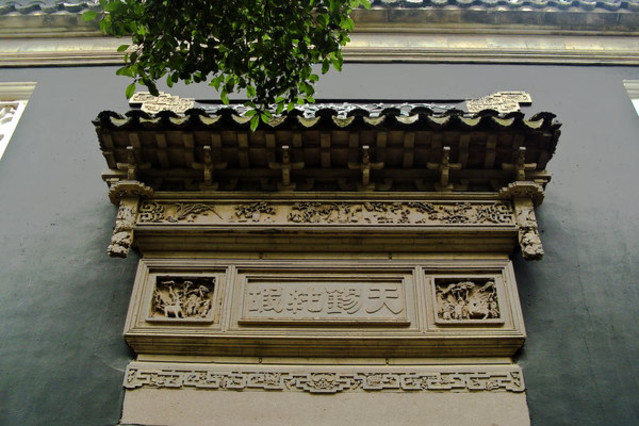
“天锡纯嘏”(tiān xī chún gǔ) symbolizing immense blessings bestowed by heaven
The gatehouse features three levels of brick carvings. The central archway bears the large characters “天锡纯嘏,” symbolizing immense blessings bestowed by heaven. The sides depict scenes from “Romance of the Three Kingdoms” — “Meeting at the Ancient City” and “Dispelling Doubts in the Ancient City,” representing virtues like loyalty and righteousness. The upper section is adorned with motifs of lingzhi mushrooms, peonies, chrysanthemums, orchids, Buddha’s hands, and auspicious clouds. The lower section showcases the “Four Gentlemen” of Chinese art: plum, orchid, bamboo, and chrysanthemum, each symbolizing good fortune.
“聿修厥德” (yù xiū jué dé)means to cultivate one’s virtues
Once you pass through the main entrance and look back at the gatehouse, the brick carvings are even more intricate and impressive than on the front. Corresponding to the “天锡纯嘏” on the front, this side features the phrase “聿修厥德,” penned by the Qing dynasty calligrapher Yin Lixun, meaning to cultivate one’s virtues. The sides are carved with the stories of “Yao and Shun’s Abdication” and “King Wen Seeking the Wise,” symbolizing both virtue and wisdom. The upper section depicts the Queen Mother of the West hosting the Peach Banquet with the Eight Immortals celebrating longevity. The next panel carves ten plum blossom deer, representing perfection and prosperity. The lower section features the Tang dynasty general Guo Ziyi’s birthday celebration attended by his seven sons and eight sons-in-law, symbolizing the blessing of many children. Combined with the treasure basin at the ridge’s center and the “double happiness” character above the doorframe, it conveys the meanings of wealth, fortune, longevity, happiness, and prosperity.
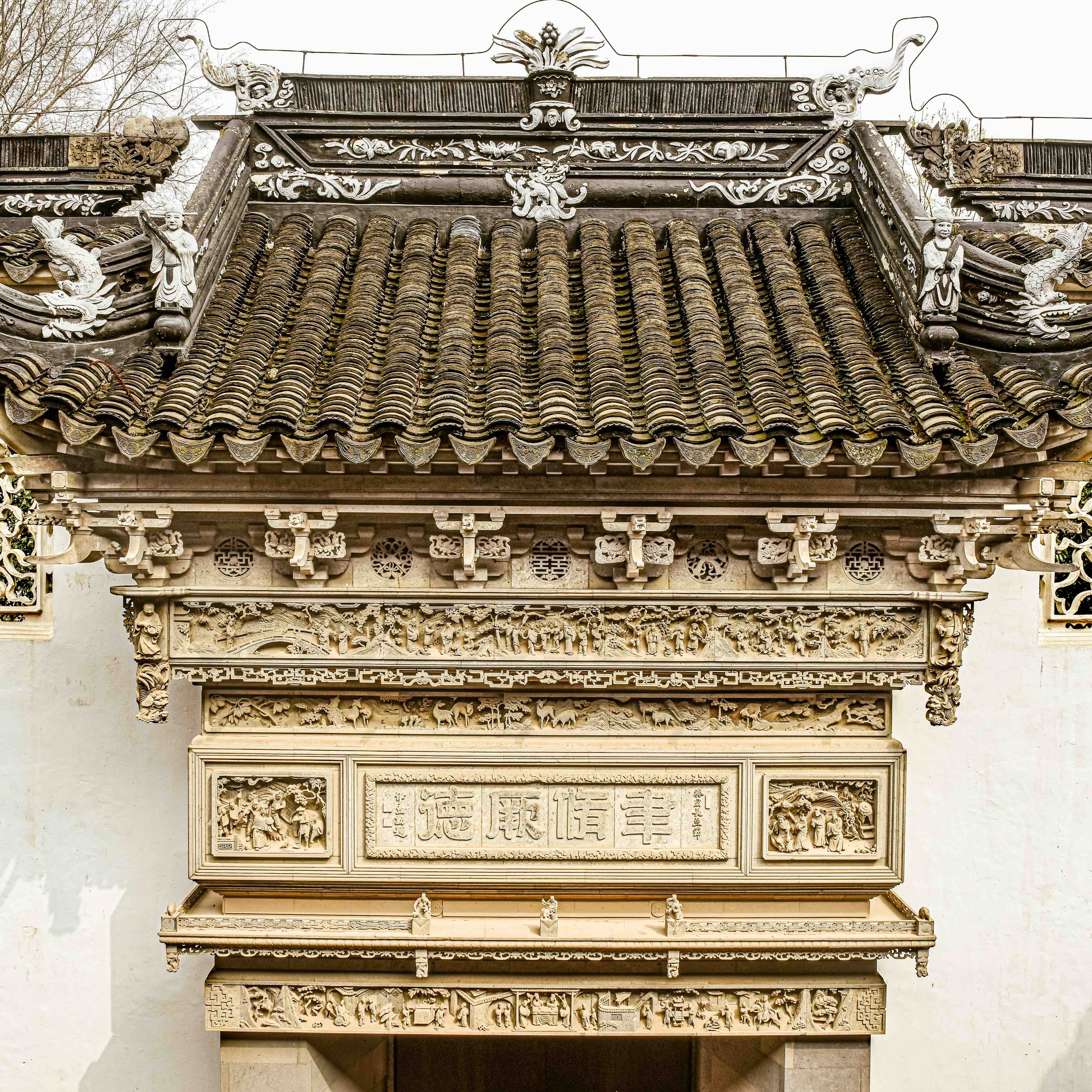
Why is it called “Phoenix Hall”?
It is named for the numerous phoenix carvings it houses—172 in total or 86 pairs. In local dialect, “eight-six” sounds similar to “happiness,” suggesting centuries of joy.
The tops of the four main columns are carved with the wings of official hats, symbolizing the potential for officialdom, hence another name for it is “Official’s Hat Hall.” The main beam features boxwood carvings depicting stories from “Romance of the Three Kingdoms” like “Oath of the Peach Garden,” “The Battle of the Three Heroes Against Lü Bu,” and “Three Visits to the Thatched Cottage,” totaling 48 scenes with lifelike character expressions.
The corridor boards in the side rooms and the skirts of the long windows are engraved with motivational stories from the “Twenty-Eight Sages.”
The load-bearing beams in the front hall of the building are adorned with nine reliefs depicting the “Eight Immortals Crossing the Sea,” while those in the back hall are fully carved with 25 scenes from “The Romance of the Western Chamber.”
The second floor features exquisitely crafted rosewood furniture and the study’s windows are fitted with colored glass imported from the West, adding a distinctive touch.
Chun Zai Lou also features stained glass windows with Western decorative styles.
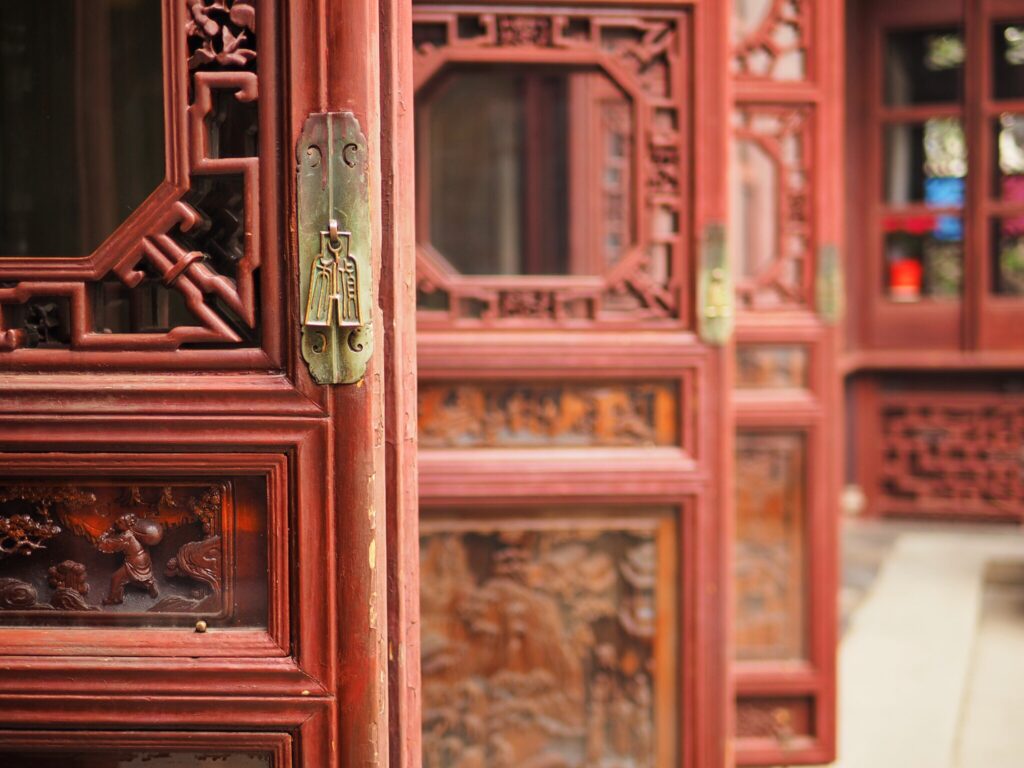
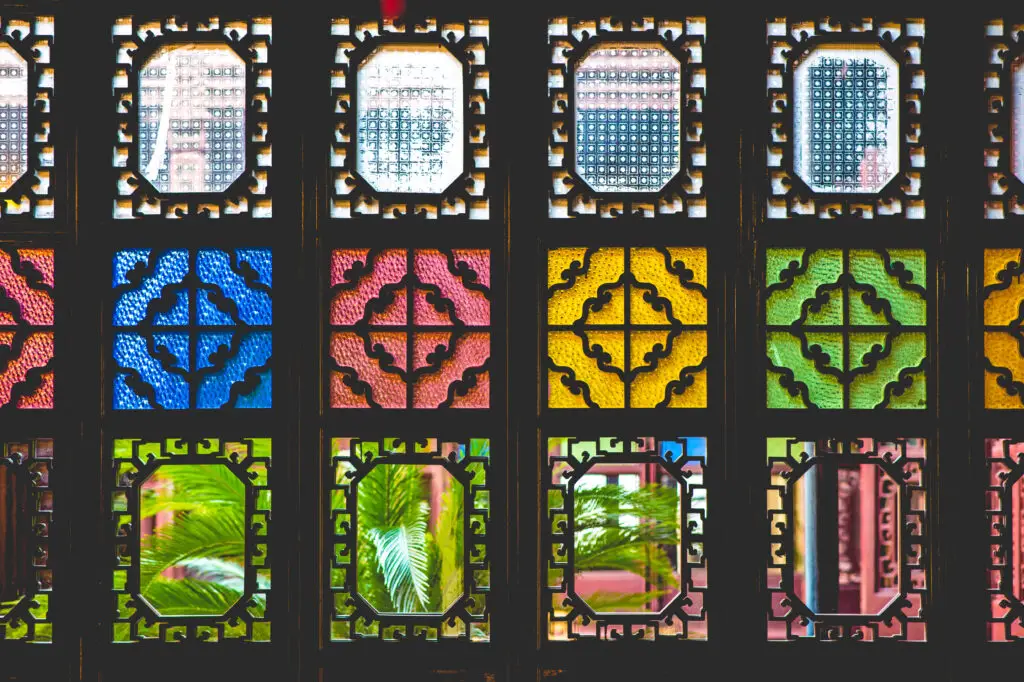
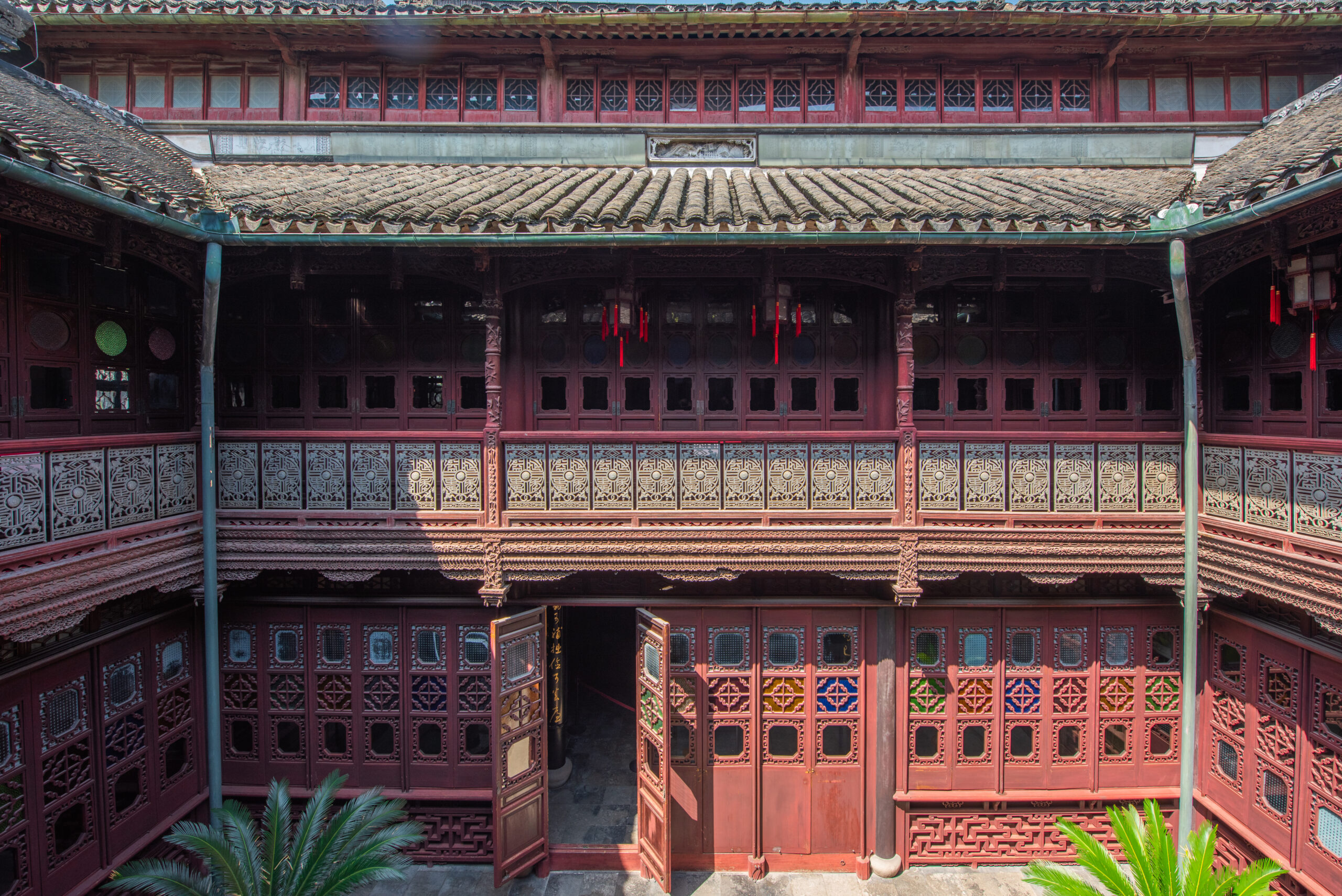
The Secrets of Chun Zai Lou
On the surface, Chun Zai Lou exudes the owner’s longing for a beautiful life. However, given the frequent social unrest of the era, many built their homes for defense and concealment.
The Jin brothers considered this during construction, incorporating architectural elements and visual obstructions to create secret spaces for hiding from “lake bandits,” escaping during emergencies, or concealing valuables.
Documents related to Chun Zai Lou reveal six hidden areas including treasure lofts, secret chambers behind walls, staircase passages, and concealed compartments in the side rooms.
Beyond these documented secrets, another hidden passage leading to the hall, undetected for half a century, was discovered in 2003 in the ceiling of the master bedroom.
The discovery started when the plaque of Chun Zai Lou, severely damaged over time, was set to be restored by the site managers. Unexpectedly, while rehanging the repaired plaque, they noticed a seam in the panel behind it. Pushing aside the panel revealed an entrance about 3 feet wide and 2 feet high, leading to a hidden passageway located above a structure called ‘Chuan Peng Xuan.’ Further exploration on the plaque’s directly opposite wall led to another seam. Climbing up with a ladder and pulling it open, another hole appeared, initially thought to be the entrance to another secret passage, but this assumption was quickly dismissed.
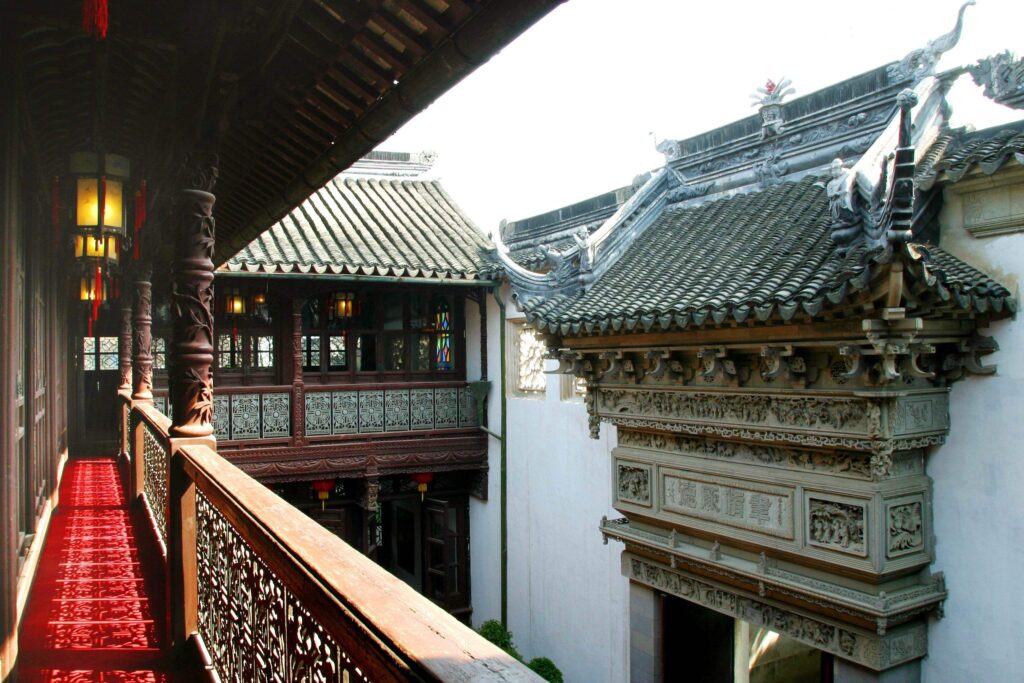
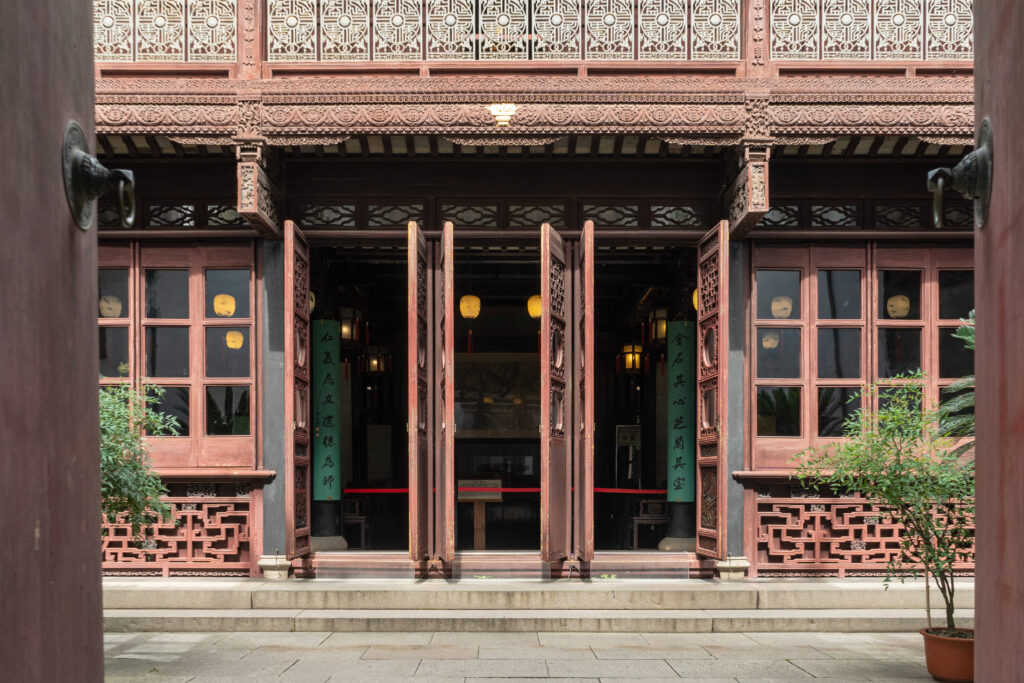
People continued searching, carefully studying the structure of the house. Upon reaching the second floor’s ‘Master Bedroom’, they climbed a ladder and tapped on the ceiling. Eventually, they found a loose spot on the ceiling, pushed hard, and lifted a wooden panel. To their surprise, a completely unexpected secret passage was revealed right before their eyes.
Climbing into this secret passage and walking forward leads to a hidden room approximately 10 square meters in area and about two meters in height. The floorboards of these hidden rooms are made of high-quality Jiangxi wood, making them very sturdy. The room is divided into two sections: one for storing money and valuable items, and another for hiding people. The owner meticulously planned to safeguard both wealth and personal safety.
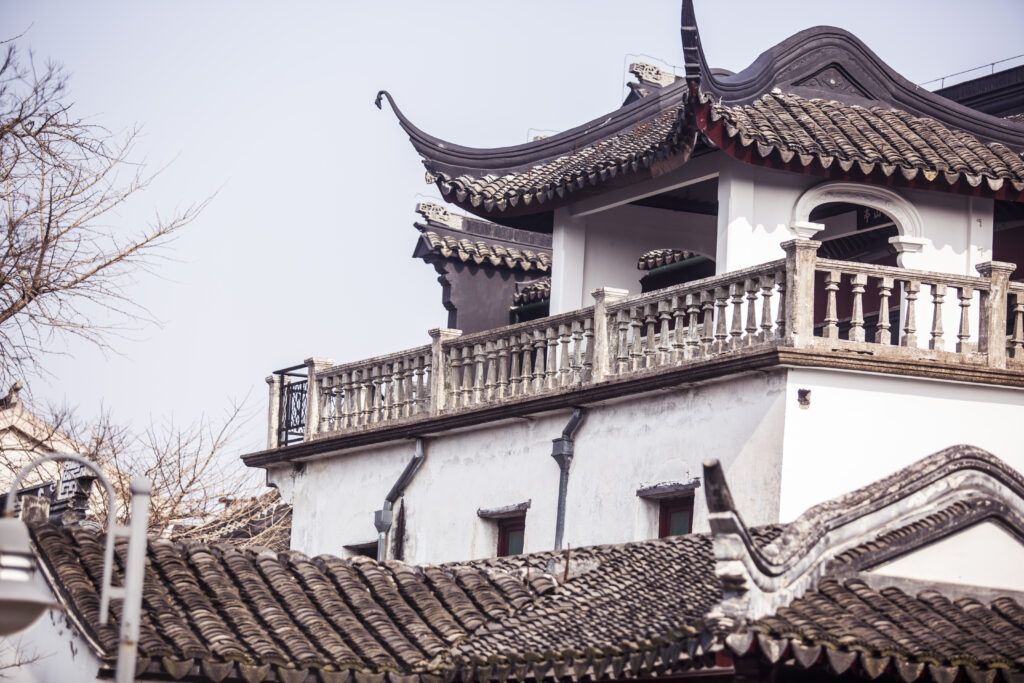
Above the hidden room is a small tiger window that serves as a lookout, allowing one to see clearly if there are any lake pirates on Lake Taihu. On the east and west sides of the hidden room, behind two wooden panels, are secret passages leading to the hall. In an emergency, family members could use these passages to hide in the secret room. During times of chaos, lake pirates broke into the Carved Building three times but never discovered these secrets. In 1960, Jin Xizhi passed away at the age of 79.
